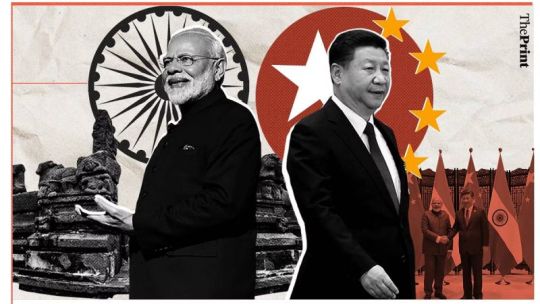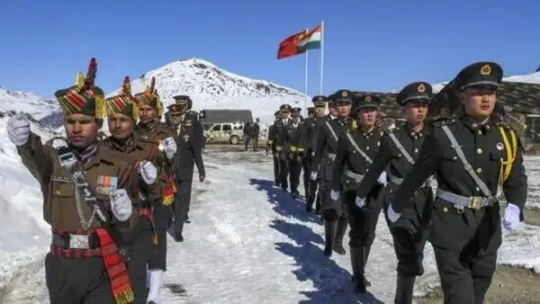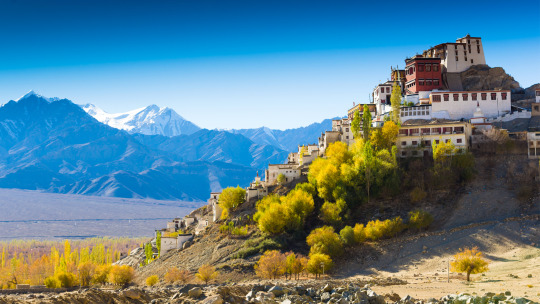#Galwan
Explore tagged Tumblr posts
Text
Only Pirates do this Phillipines to China
#chinesenavy#south china sea#galwan#indianarmy#seapirates#islamicterrorism#shuksgyan#hamas#gaza strip#colshukla
0 notes
Text

UPDATE: Is China preparing for another war with India? The US thinks it is!! According to a recent report by the US Pentagon, China has continued to build new roads, helipads, bridges, airports, and even new villages along the Line of Actual Control (LAC) with India! Moreover, China has also reportedly deployed more troops in the region and the same is expected to continue throughout 2023!!
Read full: https://www.linkedin.com/posts/casakshamagarwal_china-india-lac-activity-7122865677853425664-2bZr?utm_source=share&utm_medium=member_desktop
Follow Jobaaj Stories (the Media arm of Jobaaj.com Group) for more.
#china#india#lac#us#pentagon#military#politics#geopolitics#globalpolitics#conflict#galwan#skirmish#airforce#army#indian#chinese#trouble
1 note
·
View note
Text
Çin ve Hindistan Arasındaki Sınır Geriliminde Yeni Gelişmeler
Çin Dışişleri Bakanlığı Sözcüsü Lin Cien, iki ülkenin 2020 yılındaki anlaşmazlığın ardından gerilimlerin azaltılması yönündeki çabalarının olumlu sonuçlar verdiğini ifade etti. Lin, “İki taraf, ilgili meselelerde anlaşmaya varmıştır” şeklinde bir açıklamada bulundu. Bu açıklama, Çin ve Hindistan’ın diplomatik ve askeri kanallar aracılığıyla uzun süredir sürdürdüğü yakın iletişimin bir yansıması…
#Çin#askeri çatışma#diplomasi#Fiili Kontrol Hattı#Galwan Vadisi#Himalaya#Hindistan#Ladakh#sınır anlaşmazlığı#sınır gerilimi
0 notes
Text
India and China Agree on Disengagement and Patrolling Arrangements Along LAC: A Step Towards Border Stability
India and China Agree on Disengagement and Patrolling Arrangements Along LAC: A Step Towards Border Stability In a significant development in India-China relations, the two nations have reached an agreement to disengage their troops and establish new patrolling arrangements along the Line of Actual Control (LAC). This decision, announced by India’s Foreign Secretary Vikram Misri, marks a crucial…
#Asian Geopolitics#Border Tensions#Demchok Dispute#Depsang Plains Issue#Diplomatic Negotiations#Eastern Ladakh Conflict#Galwan Valley Clash#India and China Agree on Disengagement#India-China Border Dispute#India-China Relations#Line of Actual Control (LAC)#Military Disengagement#Pangong Tso Standoff#Peace Talks#S. Jaishankar#Sino-Indian Dialogue#Vikram Misri
0 notes
Text
India-China Agree to Disengage at Ladakh Border: MEA
India-China Agree to Disengage Troops in Ladakh: In a significant step towards easing tensions along their disputed Himalayan border, India Monday announced on that it has reached a mutual agreement with China to disengage their troops from several friction points in the Ladakh region. The decision, based on a statement made by India’s External Affairs Secretary, Vikram Misri, marks a crucial…
#Indian Army#Galwan Valley Clash#India China Agree to Disengage Troops#India China Border Dispute#MEA#PLA#Vikram Misri
0 notes
Text
Two incidents of skirmishes between Indian, Chinese troops along LAC come to light
NEW DELHI — At least two previously unknown incidents of skirmishes between the Indian and Chinese troops along the Line of Actual Control (LAC) have come to light with citations for gallantry awards conferred on Indian Army personnel mentioning them. The citations, read out at an investiture ceremony by the Army’s Western Command last week, provided brief details of how the Indian troops…

View On WordPress
1 note
·
View note
Text
Galwan hero's wife becomes Army officer, posted in Ladakh
New Delhi :Rekha Singh, wife of Naik Deepak Singh who was killed in the Galwan Valley clashes in 2020, has been commissioned into the Indian Army as a Lieutenant, officials said on Saturday.She has been posted to a frontline base along the Line of Actual Control (LAC) in eastern Ladakh, they said Lt Singh on Saturday completed her one-year training at the Chennai-based Officers Training Academy…

View On WordPress
0 notes
Text
India says it has lodged a "strong protest" with China over a new map that lays claim to its territory.
Indian media have reported that the map shows the north-eastern state of Arunachal Pradesh and the disputed Aksai Chin plateau as China's territory.
It was released by China's ministry of natural resources on Monday.
"We reject these claims as they have no basis," India's foreign ministry spokesperson Arindam Bagchi said.
He added that such steps by China "only complicate the resolution of the boundary question".
Beijing has not officially responded yet.
India's Foreign Minister S Jaishankar also called China's claim "absurd".
"China has even in the past put out maps which claim the territories which are not China's, which belong to other countries. This is an old habit of theirs," he told TV channel NDTV on Tuesday.
India's protest comes days after Prime Minister Narendra Modi and Chinese President Xi Jinping spoke on the sidelines of the Brics summit in South Africa. An Indian official said afterwards that the two countries had agreed to "intensify efforts at expeditious disengagement and de-escalation" along the disputed border.
Shadow of 60-year-old war at India-China flashpoint
The Indian monastery town coveted by China
India has often reacted angrily to China's attempts to stake claim to its territory.
The source of the tension between the neighbours is a disputed 3,440km (2,100 mile)-long de facto border along the Himalayas - called the Line of Actual Control, or LAC - which is poorly demarcated. The presence of rivers, lakes and snowcaps means the line can shift in places.
Soldiers on either side come face to face at many points, which can spark tensions - the last time being in December when Indian and Chinese troops clashed along the border in the town of Tawang.
China says it considers the whole of Arunachal Pradesh its territory, calling it "South Tibet" - a claim India firmly rejects. India claims the Aksai Chin plateau in the Himalayas, which is controlled by China.
In April, Delhi reacted sharply to China's attempts to rename 11 places in Arunachal Pradesh, saying the state would always be "an "integral and inalienable part of India".
Relations between India and China have worsened since 2020, when their troops were involved in a deadly clash at the Galwan valley in Ladakh - it was the first fatal confrontation between the two sides since 1975.
8 notes
·
View notes
Text
🌍 War, Peace & Nature: The Galwan Battlefield Experience 🇮🇳🏔️

Imagine standing amidst towering mountains, where the silence speaks of both history and serenity. 🌿✨ Galwan Valley, a place etched in history, now emerges as a unique destination for battlefield tourism. It’s a land where stories of courage blend with the breathtaking beauty of Ladakh.
🔥 Why Visit?
Witness the raw beauty of Galwan Valley—a place of resilience and remembrance.
Soak in the hot springs, nature’s way of offering warmth in the cold desert. 🛁❄️
Explore Ladakh beyond the usual, where every rock has a story.
🚗 A road trip from Leh to Galwan is an adventure of a lifetime! If you’re booking a Leh Ladakh tour package from Kolkata, don’t just stop at the usual spots—dive into the heart of history.
⚔️ Battlefield tourism is more than war; it’s about understanding the past to appreciate the present.
0 notes
Text
[ad_1] External Affairs Minister S Jaishankar met with his Chinese counterpart FM Wang Yi on Friday on the sidelines of the ongoing G20 meeting in South African capital city Johannesburg and reviewed developments in bilateral ties with a focus on direct flights and the Kailash Mansarovar Yatra. Jaishanker took to his social media platform X to post about the meeting., “The G20 Foreign Ministers Meeting in Johannesburg provided an opportunity to meet CPC Politburo member and FM Wang Yi of China this morning on its sidelines.” Separately addressing a weekly media briefing in New Delhi, MEA spokesperson Randhir Jaiswal said “The two ministers reviewed developments in the bilateral relationship since their last meeting in November, specifically the management of peace and tranquility in border areas.” The management of peace and tranquility in border areas, the Kailash Mansarovar yatra, resumption of direct flight connectivity, and travel facilitation were discussed during the meeting. There was also an exchange of views on G20 and the Shangai Cooperation Organization, the MEA spokesperson said. Foreign Secretary Vikram Misri had visited Beijing on January 26-27 this year for a meeting of the Foreign Secretary-Vice Foreign Minister mechanism between India and China on January 27. A statement by MEA said that “As agreed between Prime Minister Narendra Modi and President Xi Jinping at their meeting in Kazan in October, the two sides reviewed the state of India-China bilateral relations comprehensively and agreed to take certain people-centric steps to stabilize and rebuild ties”. The two sides decided to resume the Kailash Mansarovar Yatra in the summer of 2025; the relevant mechanism will discuss the modalities for doing so as per existing agreements. India organizes the KMY annually between June and September through the Lipulekh Pass (since 1981) in Uttarakhand and the Nathu La Pass (since 2015) in Sikkim. Before the flights were suspended due to the pandemic and the Galwan clash in 2020, the two countries had 539 direct flights per month, with a total seat capacity of over 1.25 lakh. [ad_2] Source link
0 notes
Text
[ad_1] External Affairs Minister S Jaishankar met with his Chinese counterpart FM Wang Yi on Friday on the sidelines of the ongoing G20 meeting in South African capital city Johannesburg and reviewed developments in bilateral ties with a focus on direct flights and the Kailash Mansarovar Yatra. Jaishanker took to his social media platform X to post about the meeting., “The G20 Foreign Ministers Meeting in Johannesburg provided an opportunity to meet CPC Politburo member and FM Wang Yi of China this morning on its sidelines.” Separately addressing a weekly media briefing in New Delhi, MEA spokesperson Randhir Jaiswal said “The two ministers reviewed developments in the bilateral relationship since their last meeting in November, specifically the management of peace and tranquility in border areas.” The management of peace and tranquility in border areas, the Kailash Mansarovar yatra, resumption of direct flight connectivity, and travel facilitation were discussed during the meeting. There was also an exchange of views on G20 and the Shangai Cooperation Organization, the MEA spokesperson said. Foreign Secretary Vikram Misri had visited Beijing on January 26-27 this year for a meeting of the Foreign Secretary-Vice Foreign Minister mechanism between India and China on January 27. A statement by MEA said that “As agreed between Prime Minister Narendra Modi and President Xi Jinping at their meeting in Kazan in October, the two sides reviewed the state of India-China bilateral relations comprehensively and agreed to take certain people-centric steps to stabilize and rebuild ties”. The two sides decided to resume the Kailash Mansarovar Yatra in the summer of 2025; the relevant mechanism will discuss the modalities for doing so as per existing agreements. India organizes the KMY annually between June and September through the Lipulekh Pass (since 1981) in Uttarakhand and the Nathu La Pass (since 2015) in Sikkim. Before the flights were suspended due to the pandemic and the Galwan clash in 2020, the two countries had 539 direct flights per month, with a total seat capacity of over 1.25 lakh. [ad_2] Source link
0 notes
Text
Galwan Valley Opens for Battlefield Tourism! 🌄✨

Step into history and witness the breathtaking landscapes where bravery meets beauty in Ladakh. A must-visit for adventure seekers and history buffs alike! 🏔️🗺️
0 notes
Text
Chinese apps make a return to India, great news for online shoppers.
National Desk: In recent years, Shein has been a popular name among fashion enthusiasts in India. However, in 2020, after the Galwan Valley dispute, the government banned several Chinese apps, including Shein. Since then, there seemed to be no possibility of Shein returning to India. But now, Shein has made a comeback in India, thanks to a partnership with Reliance Retail. Shein has always been a…
0 notes
Text
Ladakh hot springs to be thrown open as battlefield tourism destination from June 15
Ladakh’s hot springs, located in the Galwan Valley area near the Line of Actual Control (LAC) with China, will be opened for visitors as part of battlefield tourism starting June 15. Officials confirmed on Monday, “The hot springs in Eastern Ladakh will be accessible to tourists on June 15 this year, marking the fifth anniversary of the martyrdom of 20 Indian soldiers during a clash with the…
0 notes
Text
Ted Snider
Nov 6, 2024
The United States’ struggle to preserve the unipolar world slipped another step back when India’s Prime Minister Narendra Modi met the People’s Republic of China’s President Xi Jinping on the sidelines of the 2024 BRICS summit.
India and China’s already strained relationship strained even more in 2020 when 20 Indian troops and four Chinese troops were killed in hand-to-hand combat along their disputed border in the Galwan Valley of the Western Himalayas.
The U.S. has long exploited the animosity between the world’s two largest countries, using India as a counterbalance to China, containing the PRC and driving a wedge between it and the Global South.
In America’s geopolitical battle to maintain a U.S.-led unipolar world over a multipolar system preferred by Russia and China, India is the giant with one foot in each world. The world’s second-largest nation’s choice of sides will determine whether the unipolar world survives or evolution favors multipolarity.
But what the U.S. struggles to see—to the detriment of its own foreign policy and its own self-interest—is that India, and much of the Global South, no longer sees itself as having to make a choice between blocs. The choice of a multipolar world means not having to choose sides. In his book, The India Way, India’s foreign minister, S. Jaishankar, explains that multipolarity means that countries can deal “with contesting parties at the same time with optimal results” for their “own self-interest.”
0 notes
Text
Airtel mang đến sự kết nối ở Galwan và Daulat Beg Oldie
Airtel đã hợp tác với Quân đội Ấn Độ trong một sáng kiến đột phá nhằm đưa mạng 4G của mình đến một số địa hình xa xôi và đầy thách thức nhất trên thế giới. Điều này bao gồm Galwan và Daulat Beg Oldie (DBO), tiền đồn quân sự ở cực bắc nằm ở thị trấn biên giới, ở độ cao đáng kinh ngạc 16.700 feet so với mực nước biển. Airtel hiện là nhà cung cấp dịch vụ viễn thông tư nhân duy nhất cung cấp dịch…
0 notes